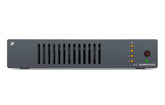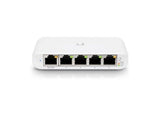The Role of Encryption in Modern Surveillance Systems
Introduction: How Secure Is Your Surveillance System?
As surveillance technology evolves, so do the risks. In 2023 alone, over 25% of cybersecurity breaches in physical security systems involved compromised video footage or unauthorized access to surveillance devices. With more IP cameras and cloud-connected systems than ever before, encryption has become a non-negotiable part of modern surveillance design.
Whether you're managing surveillance for a retail store, school campus, or national enterprise, protecting live streams, stored footage, and device communications is critical. Encryption ensures that your security system doesn’t become a vulnerability.
This blog explores the role of encryption in modern surveillance systems—what it is, why it matters, where it fits into your setup, and how to implement best practices for stronger data protection.
What Is Encryption in Surveillance Systems?
Encryption is the process of converting data into an unreadable format using cryptographic keys, making it inaccessible to unauthorized users. In surveillance systems, encryption protects video streams, recordings, and device communications from being intercepted or tampered with.
Key Encryption Applications in Surveillance:
-
End-to-end video encryption
-
Encrypted storage (NVR, DVR, cloud)
-
Encrypted device communication (camera to server, server to app)
-
User access encryption (login credentials, mobile viewing apps)
Encryption Protocols Commonly Used:
-
HTTPS / SSL / TLS for secure data transfer
-
AES (Advanced Encryption Standard) for storage and file-level encryption
-
RSA for secure key exchange
Encryption is especially vital in IP-based and cloud surveillance environments, where data travels across networks and storage solutions prone to cyber threats.
Benefits & Use Cases of Encryption in Surveillance
1. Prevents Unauthorized Access to Video Footage
Hackers targeting surveillance systems aim to intercept live feeds or stored footage for malicious use. Encryption ensures the data is unreadable without decryption keys.
Use Case: A retail store's IP camera footage is AES-256 encrypted before being stored on a cloud NVR, ensuring sensitive footage can’t be accessed even if the cloud is breached.
2. Secures Remote Access and Mobile Viewing
Many users view surveillance footage from mobile apps or web portals. Encryption protects this data during transit.
Use Case: A security manager uses HTTPS and VPN-protected mobile apps to review live video feeds from multiple sites without risking data leaks.
3. Compliance With Data Privacy Laws
Encryption helps meet security requirements for regulations like GDPR, HIPAA, PCI-DSS, and CCPA, especially when dealing with personally identifiable information (PII).
Use Case: A healthcare facility encrypts hallway camera footage that includes patient movement, meeting HIPAA standards for data protection.
4. Protects Device-to-Device Communication
Surveillance systems use cameras, recorders, and control panels that communicate constantly. Encryption secures this communication from spoofing or MITM attacks.
Use Case: A school district implements TLS-based encryption between cameras and the main NVR to prevent eavesdropping or packet injection.
5. Enhances Trust in Cloud Surveillance Systems
Cloud-based video management systems (VMS) and NVRs must prove security to gain adoption. Encryption builds confidence.
Use Case: A logistics company moves to a cloud surveillance platform, reassured by end-to-end AES encryption for video storage and access.
Challenges & Considerations
Performance Overhead
Strong encryption algorithms may introduce latency or require more processing power, especially on older systems.
Solution: Upgrade to modern cameras and NVRs with built-in hardware acceleration for encryption.
Key Management Complexity
Securely storing, rotating, and revoking encryption keys is critical but can be complex.
Solution: Use systems with centralized key management or integrate with enterprise-grade key management systems (KMS).
Incompatibility With Legacy Systems
Older DVRs, analog cameras, or outdated VMS platforms may lack encryption capabilities.
Solution: Gradually replace vulnerable components or implement network-level encryption like VPNs as an interim step.
User Awareness and Weak Credentials
Encryption is only as strong as the authentication that grants access.
Solution: Enforce strong password policies, multi-factor authentication (MFA), and encrypted user logins.
How to Implement Encryption in Your Surveillance System
Step 1: Choose Encrypted Surveillance Devices
-
Select IP cameras and NVRs that support AES-256 or TLS encryption
-
Ensure HTTPS is enabled on device web interfaces
-
Look for ONVIF-compliant devices with security profiles
Step 2: Secure Data in Transit
-
Use HTTPS for browser-based access
-
Enable SSL/TLS protocols between cameras and recorders
-
Use VPN tunnels for remote access instead of port forwarding
Step 3: Encrypt Stored Data
-
Choose NVRs or cloud storage that support encrypted video archiving
-
Enable file-level encryption and limit storage access to authorized users only
-
Use redundant encrypted backups
Step 4: Use Encrypted Remote and Mobile Access
-
Require HTTPS login for all mobile and web access
-
Avoid third-party, unsecured remote viewers
-
Use apps with built-in encryption and remote wipe features
Step 5: Implement Strong User Authentication
-
Enforce password complexity and expiration policies
-
Use multi-factor authentication (MFA) where possible
-
Limit admin access to essential personnel
Step 6: Monitor and Audit Access Logs
-
Regularly check logs for unusual activity
-
Enable alerts for failed login attempts or unauthorized IPs
-
Keep firmware up to date with security patches
FAQs
Is encryption necessary for small businesses or homes?
Yes. Even small systems can be targeted. Encryption protects privacy, prevents data theft, and secures remote access regardless of system size.
Can encrypted footage be viewed in real time?
Absolutely. Modern systems decrypt footage on-the-fly for authorized users without significant delay.
What if I lose my encryption key?
Without the key, encrypted footage becomes inaccessible. Use a key management solution with secure recovery options and backup policies.
Conclusion: Encryption Is Non-Negotiable for Modern Surveillance
In a digital age where surveillance is as much about data security as physical security, encryption is the front line of defense. It protects live feeds, recorded footage, cloud storage, and user access from growing cyber threats.
From small retail shops to global enterprises, encryption helps maintain compliance, prevent breaches, and build trust in your AV and surveillance infrastructure.
Need encrypted surveillance solutions?
Explore our range of security cameras, networking products, and AV systems built for modern, secure environments at SportsGeekUSA.











